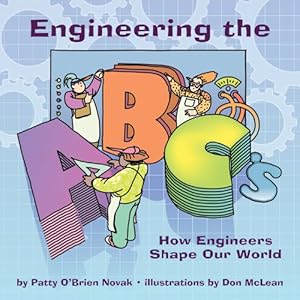Where to start? Where to start?
Resources: Children's books
Head over to Amazon.com and check out some books we have found: Engineering the ABC's by Patty Novak. This book talks about everyday materials that engineers have helped create and how they effect our everyday lives.
Engineering Elephants by Dr. Emily Hunt is really good for early childhood K-2. The book is told in rhythm and rhyme. You can look through it at Amazon and take a sneak peak!
Websites:
www.manufacturingiscool.com This is a really great place for you to use with the whole class or for students to explore one-on-one. Start with a bunch of pictures of items that engineers have helped to create in categories from food to fashion. Next, choose a picture and it will take you to a new link with videos, narratives and other websites! Fun!
http://www.tryengineering.org/ This website offers lesson plans and online games for ages 8-18. The lessons are a little cumbersome, but if you look through them you may find something worth using.
Curriculum:
 Hands down, without a doubt...the best stuff out there for elementary kids is Engineering is Elementary from the Boston Science Museum. They have created 20 units that are actually correlated to FOSS and STC units as well as the Next Gen Science Standards. We purchased several units last year for our school. I used Alarming Ideas: creating an alarm circuit. What I liked about this curriculum, is that each unit starts with a story. The story has a global connection; this one is set in Australia! Each story has a real world problem which the kids are able to create solutions for. The materials are easy to find, relatively cheap, and easy to use.
Hands down, without a doubt...the best stuff out there for elementary kids is Engineering is Elementary from the Boston Science Museum. They have created 20 units that are actually correlated to FOSS and STC units as well as the Next Gen Science Standards. We purchased several units last year for our school. I used Alarming Ideas: creating an alarm circuit. What I liked about this curriculum, is that each unit starts with a story. The story has a global connection; this one is set in Australia! Each story has a real world problem which the kids are able to create solutions for. The materials are easy to find, relatively cheap, and easy to use.Next topic...how to introduce the engineering design process.
Comment:


Hi! I JUST came across your blog from a quick Science search on bloglovin'. I, too, am a Science teacher blogger and would love to have you check me out. THANKS!
ReplyDeleteteachingcortez.blogspot.com
I really enjoyed looking at "teachingcortez". She has some great ideas! We may need to guest blog for each other!
Delete